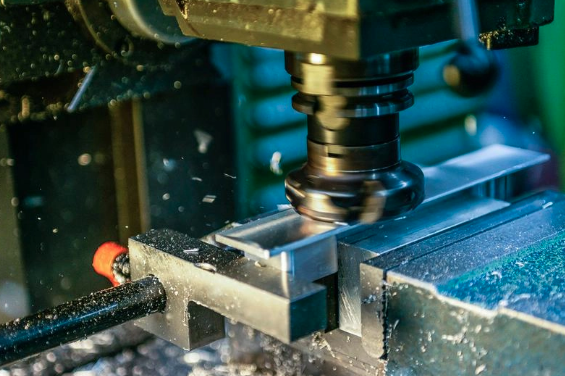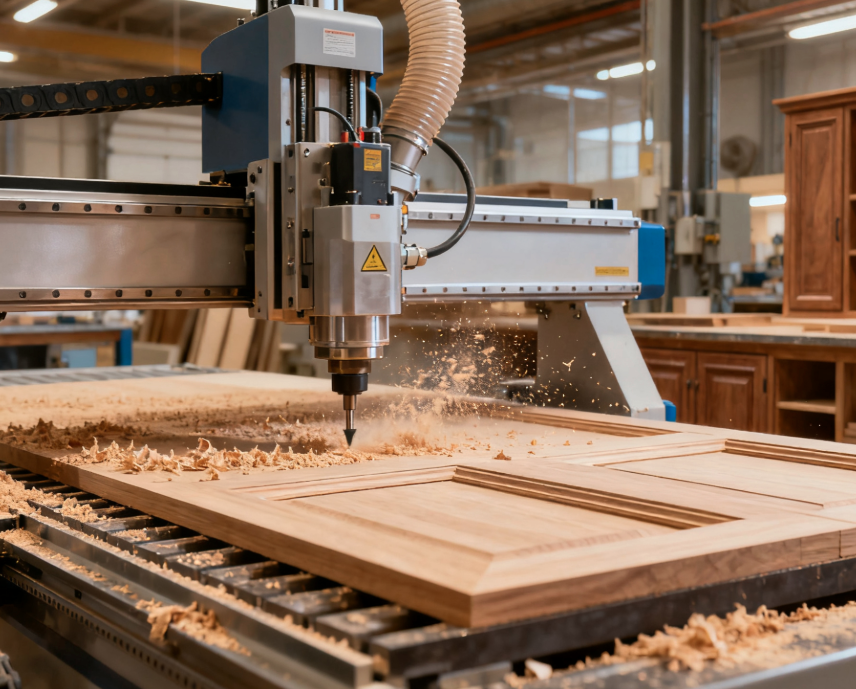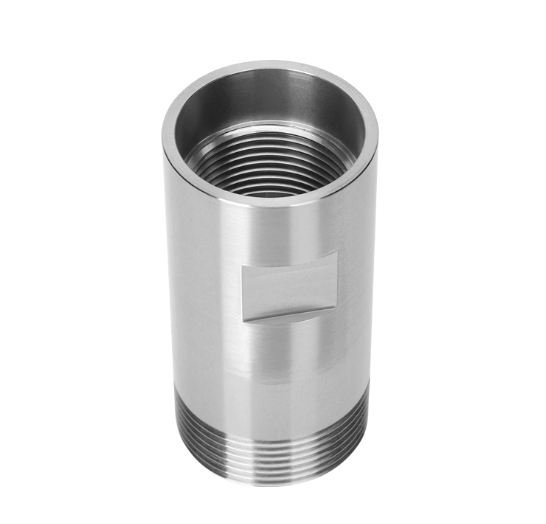


Applications and materials used in CNC machining
Views: 0 Author: Site Editor Publish Time: 2025-09-12 Origin: Site









CNC machining is a powerful and versatile manufacturing process that serves industries from aerospace to furniture making. While large factories depend on industrial machines, even a desktop CNC machine can produce precise prototypes, signage, and custom parts. By combining digital design with automated cutting, CNC machining enables fast, repeatable, and accurate production. In this article, we’ll explore the major applications of CNC machining and the many materials used in CNC machining, helping you see why it’s vital for both hobbyists and global manufacturers.
Applications of CNC Machining in Automotive Industry
CNC machining powers nearly every stage of car production. It cuts, drills, and mills engine blocks. Factories trust it to create brake parts and gearboxes. The process keeps every piece identical and reliable.
Common Automotive Uses:
Engine blocks, pistons, cylinder heads
Transmission housings and shafts
Brake system components
Lightweight interior plastic parts
| Component | Typical Material | Why It’s Used |
|---|---|---|
| Engine block | Cast aluminum | Lightweight, heat control |
| Brake caliper | Stainless steel | Rust resistance |
| Gearbox housing | Alloy steel | High strength |
| Dashboard trim | ABS plastic | Flexible, cost-effective |
CNC also supports rapid prototyping. Designers can test new shapes quickly. This shortens development cycles and keeps innovation moving.
Applications of CNC Machining in Aerospace Industry
Aircraft parts need accuracy down to microns. CNC machining handles this challenge daily. Companies cut turbine blades, landing gear, and structural parts. Even small bolts must meet strict safety standards.
Aerospace CNC Applications:
Jet engine turbines
Landing gear assemblies
Airframe components
Cabin interior fittings
| Aerospace Part | Material Used | Key Benefit |
|---|---|---|
| Turbine blade | Titanium alloy | Heat resistance |
| Landing gear | High-grade steel | Impact durability |
| Airframe panels | Aluminum alloy | Lightweight strength |
| Seat frame | Carbon fiber | Low weight, high strength |
Without CNC, producing these complex parts would take months. Now, shops deliver precision components in weeks.

CNC Machining in Medical and Healthcare Fields
Doctors and hospitals depend on CNC technology more than most realize. It helps create implants, surgical instruments, and prosthetics. Each piece must fit the patient perfectly.
Medical CNC Applications:
Artificial joints and bone plates
Dental implants and crowns
Surgical tools
Prosthetic devices
| Medical Part | Material | Why It’s Chosen |
|---|---|---|
| Hip implant | Titanium alloy | Biocompatible, strong |
| Dental crown | Ceramic or zirconia | Natural appearance |
| Surgical scalpel | Stainless steel | Sharpness, sterilizable |
| Prosthetic limb | Lightweight plastic | Comfort, usability |
CNC machines let labs produce custom parts quickly. This shortens patient wait times and improves treatment.
Applications of CNC Machining in Electronics Industry
Your phone, laptop, and TV likely include CNC parts. Factories use it to carve circuit boards, cases, and connectors. Precision matters when components are only millimeters wide.
Electronics CNC Applications:
Printed circuit boards (PCBs)
Heat sinks and cooling systems
Device enclosures
Connectors and sockets
| Electronic Component | Material Used | Key Feature |
|---|---|---|
| PCB base | Copper, FR-4 | Conductivity, stability |
| Heat sink | Aluminum | Heat dissipation |
| Phone case | Magnesium alloy | Light and durable |
| Connector pins | Brass | Conductive, machinable |
CNC machining also aids rapid prototyping of electronic devices. Engineers test ideas fast before mass production.
CNC Machining for Furniture and Cabinetry
Woodshops use CNC routers to cut furniture parts with ease. From cabinets to chairs, the machine handles complex designs quickly. It saves hours of manual labor.
Furniture CNC Applications:
Custom cabinets
Tables and chairs
Countertops and doors
Decorative patterns
| Product Type | Material Used | Key Reason |
|---|---|---|
| Kitchen cabinet | Plywood, MDF | Easy to machine, stable |
| Dining table | Hardwood | Strong, attractive |
| Closet doors | Composite board | Affordable, smooth |
| Decorative panel | Acrylic | Lightweight, colorful |
Designers also create 3D carvings for furniture accents. This helps shops offer unique products to customers.

Materials Commonly Used in CNC Machining
CNC machines can cut a wide range of materials, each with unique properties that influence machining processes and outcomes.
Metals in CNC Machining
Aluminum: Lightweight, corrosion resistant, and easy to machine. Ideal for automotive and aerospace applications due to its strength-to-weight ratio.
Steel: Strong, durable, and heat resistant. Suitable for heavy-duty applications like gears and tools.
Stainless Steel: Corrosion resistant and biocompatible. Often used in medical and food processing equipment.
Brass: Easy to machine and conductive. Commonly used in electronics and musical instruments.
Titanium: Strong, light, and heat resistant. Preferred for high-performance applications like aerospace and medical implants.
Plastics in CNC Machining
ABS: Strong, lightweight, and cost-effective. Often used for prototypes and furniture.
Acrylic: Transparent and decorative. Commonly used for signage and panels.
Nylon: Wear-resistant and flexible. Suitable for bearings and mechanical parts.
Polycarbonate: Tough and impact resistant. Ideal for protective shields and high-impact parts.
POM (Delrin): Low friction and stable. Often used for precision parts and gears.
Wood in CNC Machining
Hardwoods: Dense and strong, like oak, maple, and mahogany. Used for furniture and instruments.
Softwoods: Lighter and easier to machine, like pine and cedar. Common in furniture and construction.
Engineered Wood: Consistent and stable, like MDF and plywood. Used for cabinetry and furniture.
| Material Type | Strength | Machinability | Common Use Cases |
|---|---|---|---|
| Aluminum | Medium | Easy | Automotive, aerospace |
| Steel | High | Moderate | Gears, tools |
| Brass | Medium | Easy | Electronics, instruments |
| ABS Plastic | Low | Easy | Prototypes, furniture |
| Acrylic | Low | Easy | Signage, panels |
| Maple Wood | Medium | Moderate | Furniture, instruments |
Material choice depends on design needs, budget, and durability goals.

Frequently Asked Questions
What are the most common applications of CNC machining?
CNC machining is widely used in industries like automotive, aerospace, medical, electronics, furniture, and signage. It produces engine parts, aircraft turbines, medical implants, circuit boards, custom furniture, and even musical instruments.
What materials are most often used in CNC machining?
The most common CNC machining materials include metals (aluminum, steel, brass, titanium), plastics (ABS, acrylic, nylon, polycarbonate), and wood (maple, oak, MDF). Each material offers unique benefits for different applications.
Why is aluminum popular in CNC machining?
Aluminum is lightweight, corrosion resistant, and easy to cut. It’s a top choice for automotive and aerospace parts, as well as electronic heat sinks and housings.
Can CNC machines cut plastics?
Yes, CNC machines handle plastics very well. Materials like ABS, acrylic, and polycarbonate are common. Plastics are often chosen for prototypes, enclosures, and signage due to low cost and flexibility.
What is the difference between CNC machining metals and plastics?
Metals like aluminum or steel require higher cutting power and cooling. Plastics are easier to cut but need careful control to avoid melting. Both provide unique benefits depending on the project.
Conclusion
CNC machining remains the foundation of modern production because it works with metals, plastics, wood, composites, and more. Its role spans automotive, aerospace, medical, and consumer industries, giving companies the ability to innovate faster and reduce costs. Whether for a prototype, a custom design, or high-volume manufacturing, CNC technology ensures precision and efficiency. For businesses seeking reliable solutions in this field, Tongyu CNC Machining provides expertise, advanced equipment, and tailored services to help every project succeed.





